How to clean garden furniture to keep your pieces looking brand-spanking new
From rattan, to wood, to metal, follow these tips about how to clean garden furniture to get your garden summer ready


Imani Cottrell
If your garden furniture and accessories are looking rather tired, that does not mean you need to buy new pieces. Instead, follow these tips about how to clean garden furniture to give your old items a new lease of life. Your best garden furniture will last for longer if you know how to clean and preserve them so they can be enjoyed for many years to come.
‘With the unpredictability of British weather, it could be worth investing in a fitted weatherproof cover for your furniture,’ says Andy Baxter, managing director at Maze.
‘Try to prevent keeping your furniture on grass or areas with a build-up of moisture when not in use. Increased exposure to moisture could encourage damp to get in, and it’s tricky to get out once there. If this isn’t an option, try placing the legs of your furniture on a dry surface – such as planks of wood – as this adds a protective barrier.’
How to clean garden furniture
Your garden ideas should be enjoyed all year round, so your garden furniture ideas will need a general clean, or a more specialised targeted clean throughout the year. No matter if you want to look after a brand-new furniture investment or keep an old piece in tip-top condition, knowing how to clean garden furniture is essential.
‘It is important to keep garden furniture clean to ensure it stays looking in pristine condition for years to come. Different types of furniture, and their materials, require different types of care so it is important to know the best practice for yours,’ says Paul Hicks, product and marketing manager at STIHL GB.
How to clean wooden garden furniture
Many people have some kind of wooden furniture in their garden so knowing how to clean it is important to ensure its longevity.
Martin Young, founder of handcrafted wooden garden furniture Sitting Spiritually of Lyme Regis advises not using a pressure washer on wood.
Sign up to our newsletter for style inspiration, real homes, project and garden advice and shopping know-how
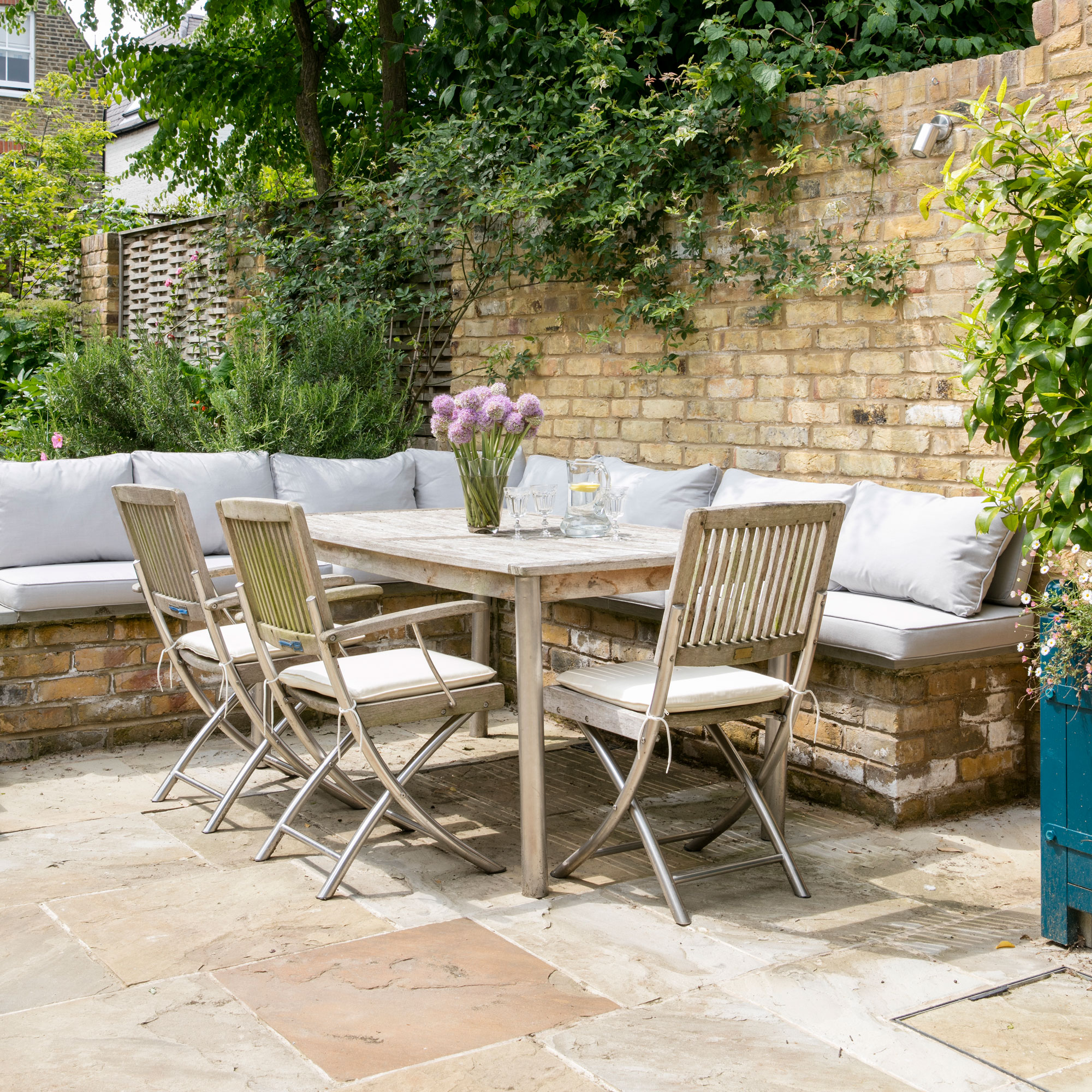
‘Most people think it’s the way forward, and although it might seem satisfying as you watch it change colour we’ve seen lovely furniture destroyed by the powerful jets stripping away timber along with the dirt. Instead, I recommend cleaning it all over with a wood cleaner, giving it light sand, and then applying a saturating wood oil. This will keep your wooden seats and tables strong and looking their best for decades.’
A wood cleaner such as Net-Trol, £24.66 for 1ltr, Owatrol, restores wood to its natural colour without bleaching the material and is harmless to plants and shrubs.
If your hardwood furniture is a few years old and has silvered with age, you can restore it to its original colour by using a specialist product like Cuprinol Garden Furniture Restorer, £14.99 for 1ltr, Amazon. Paint it on and the wood will start to lighten in colour. Work it into the wood with an abrasive pad, leave it to work its magic for 15 minutes, and then wash it off.

Before you start cleaning the wood, remove any loose dirt using a soft brush or vacuum, and make sure the wood is dry before doing so. If you can’t use a specialised wood cleaner, Rian Habergham, garden furniture expert at Leisure Bench advises using warm and soapy water.
‘Mix some washing-up liquid with warm water and use a sponge or clean cloth to dab and wipe down the furniture. This should get rid of the majority of mud and dirt before leaving it to dry naturally. Repeat if necessary. Once dry, you might notice a few harsher pieces of dirt. Feel free to repeat these steps as many times as necessary to get your furniture clean.’
Now it’s time to protect your wood. This should be done every season. Teak oil will shield your hardwood furniture from the elements and keep it looking new. Using a rag, apply the oil, rubbing it in gently and following the grain. You can add more than one coat of oil, but make sure the first one dries completely before you apply the next.
The other thing wooden furniture can experience is mould. Brush up on how to clean mould from wood if this is the case for yours.
How to clean wrought-iron garden furniture
‘Metal is, of course, more hard-wearing than sort furnishings but it does require upkeep to stop rust, otherwise, it can become hard to maintain the quality of the product over time and can fall into disrepair,’ says Paul McFadyen, chief executive and metals specialist at Metals4U.
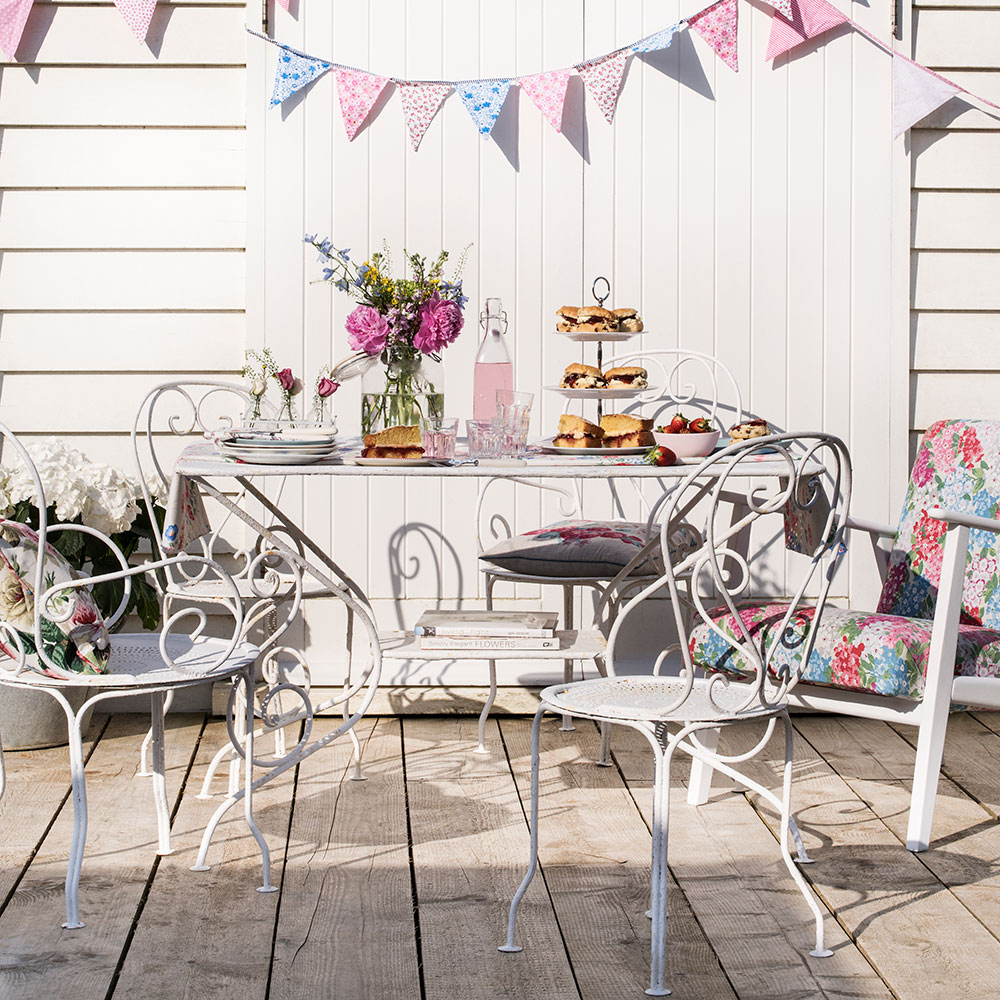
To keep your metal garden furniture looking fresh, start by removing any dirt or debris with a soft-bristled brush or dry cloth.
‘We would suggest spraying your metal with a heavy-duty cleaner that is safe on metals, paints and most plastics. Such as a solvent designed to cut through dirt, grime and any tough grease that will build upon your furniture when it is sat outdoors over long periods.’
A cleaner such as the multi-surface concentrate, £4.00, Method, can be used alone to tackle grime, or added to water to make spray bottles and buckets. Plus, it comes in various refreshing fragrances such as mango and citrus, cherry and bergamot and lotus flower and sage.
Make sure you rinse off any soap residue because leaving this on could damage the metal and then leave to dry thoroughly. You can then sand and touch up rust spots using enamel paint, such as Hammerite Metal Smooth Paint, £20 for 750ml, Wickes.
How to remove rust from metal outdoor furniture
‘Rust is generally a tough type of corrosion to clean from metal surfaces, and therefore must be treated with the right care so as not to damage your furniture,’ says Paul McFadyen from Metals4U.
‘Active corrosion spray can be a very useful product to have in your cupboards especially during the summertime when there is more humidity and heat outdoors. This style of spray can also be bought in colours such as white and will offer high coverage and provide excellent adhesion, even to rust.’
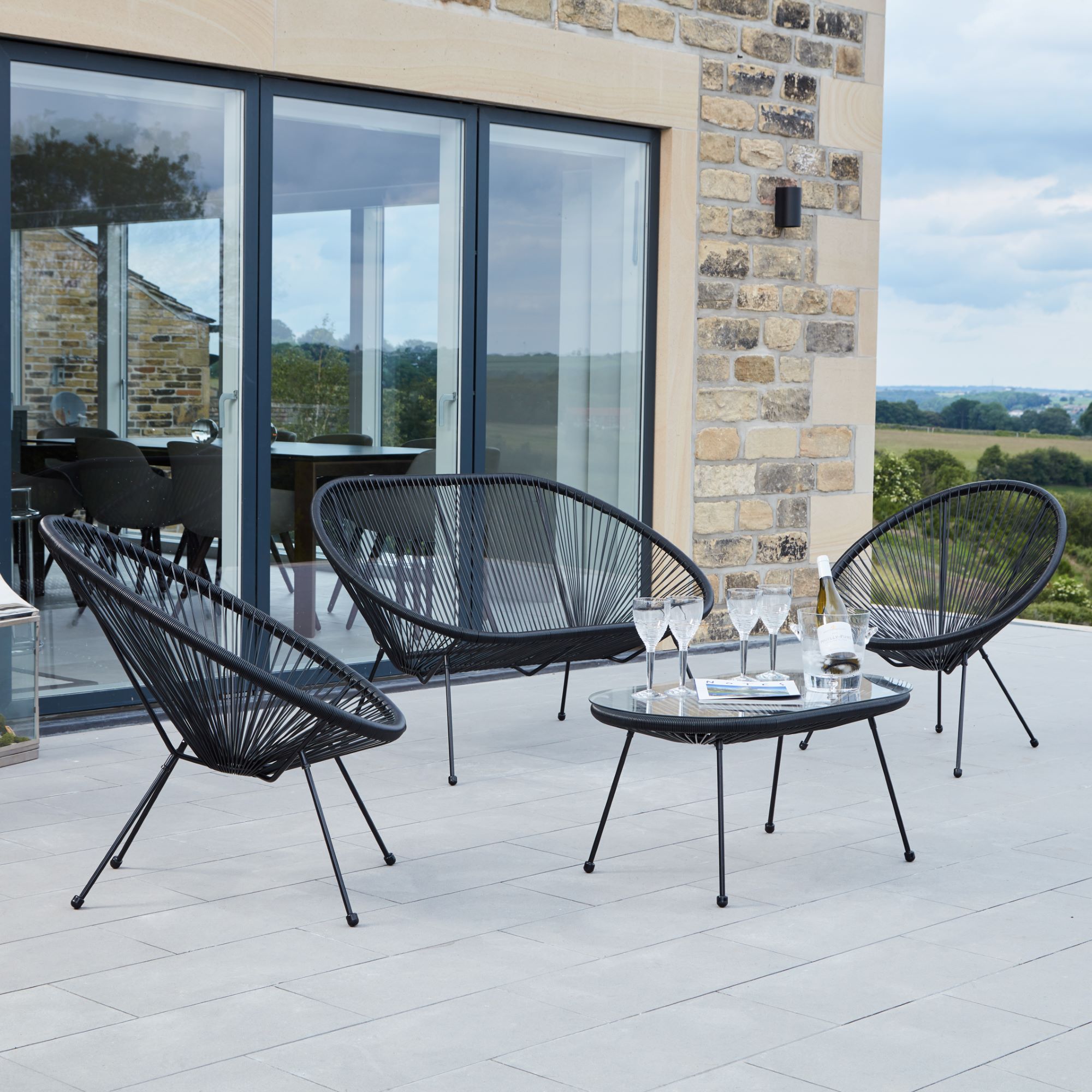
If your metal furniture is already rusting fear not. Take some white vinegar and pour it evenly over the surface of the furniture and give it about an hour to settle.
Then, just wipe it away with a cloth and repeat if necessary; be sure to wear gloves while doing so. If the surface is also caked in grime add some salt after you have poured on the vinegar and gently scrub with some steel wool or a metal bristle brush.
How to clean rattan garden furniture
Rattan is a popular material to find in garden seating ideas and the synthetic kind can last for many years outdoors, even during the winter. This is as long as the weave is strong and has been covered in a UV protective coat. Rattan is weather resistant and easy to clean, so a little TLC will keep it looking its best.
‘To clean rattan furniture, you can use the soapy water method,’ says Rian Habergham from Leisure Bench.
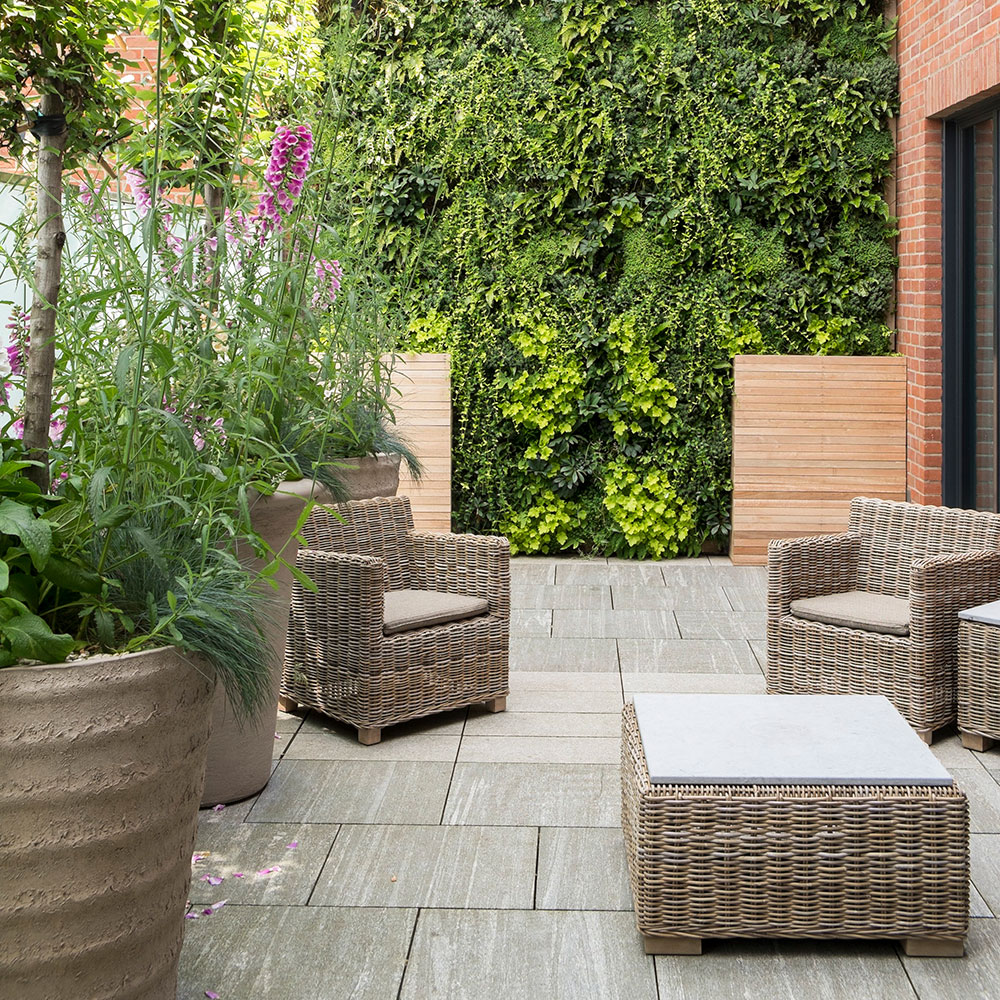
First, use a handheld vacuum or brush attachment to remove loose dirt and a toothbrush can even be used for any nooks or crannies. Take a bowl of warm soapy water and dip a microfibre cloth into the water and wring it until it’s slightly damp and clean the rattan. Do not oversaturate the rattan and use a toothbrush in soapy water for difficult-to-reach places. Allow the rattan to air dry in a well-ventilated area.
‘Make sure to be a bit more gentle with the process as otherwise, you could damage the finish. If there is any metal on your rattan furniture, you will have to pay special attention to these bits to ensure that they don't go rusty and are treated properly.’
Ryan Schwarze, head of business at Luxury Rattan says, 'If you have an old piece of rattan furniture that is looking worse for wear, I would recommend using a soft cloth and rubbing some olive oil onto the product. This will reduce cracking and add shine to your rattan, making it look as good as new.'
How to clean plastic garden furniture
‘If you have white furniture with particularly nasty stains, you can use bleach to clean it. Dilute bleach with water and use a cloth to wipe it over the impacted areas. Make sure to rinse the furniture properly after applying any type of bleach,’ says Rian Habergham from Leisure Bench.
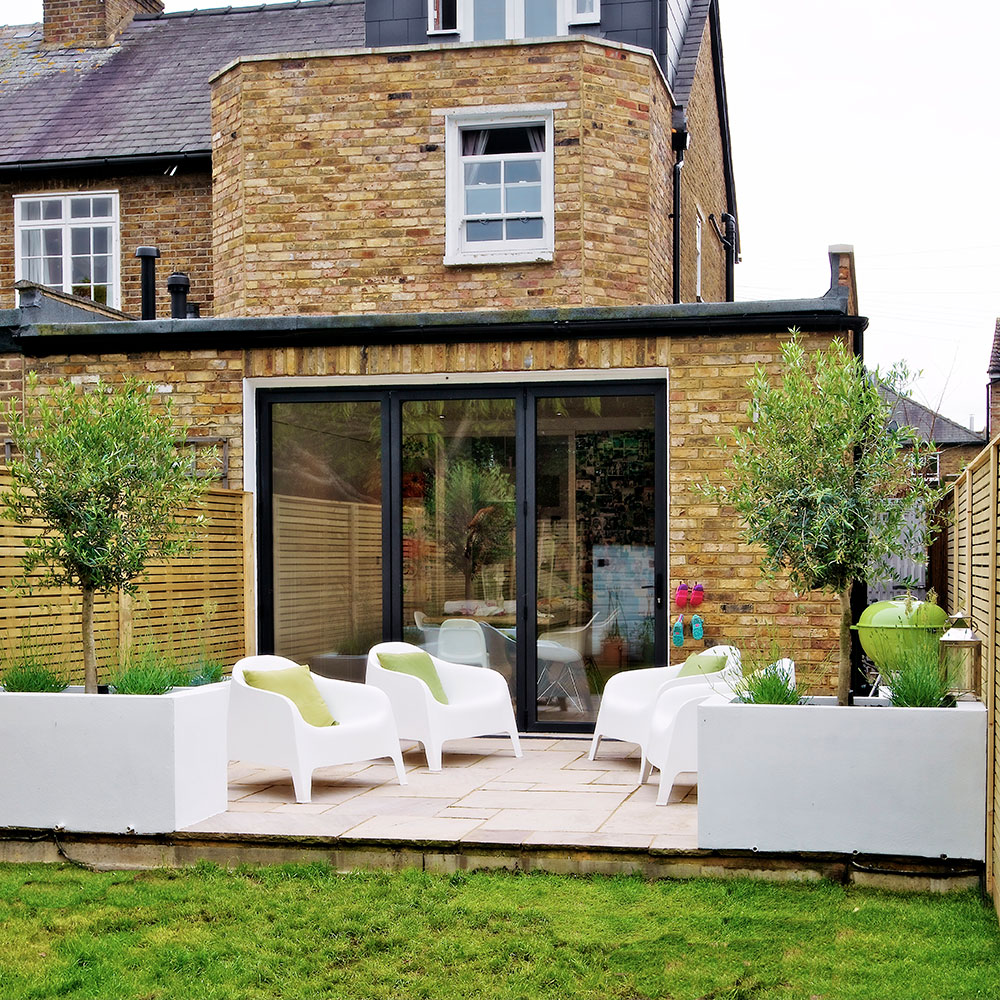
Do not use bleach for coloured plastic furniture because this will cause the colour to fade. Wear protective gloves when using bleach such as Marigold Extra-Tough Outdoor Gloves, £2.50, Wilko, which are designed for heavy-duty protection.
White vinegar is an effective cleaning agent that dissolves and removes filth, dirt, and stubborn stains. Mix the white vinegar in a bucket of warm water and use a sponge to clean the plastic furniture. Use a sponge rather than anything abrasive, so as not to scratch or mark the surface. Afterwards, make sure to thoroughly rinse it before patting it dry and leaving it outdoors in the sun.
For plastic furniture which is dirty but doesn’t have any stains, washing up liquid mixed with water is enough for a good clean.
How to clean aluminium garden furniture
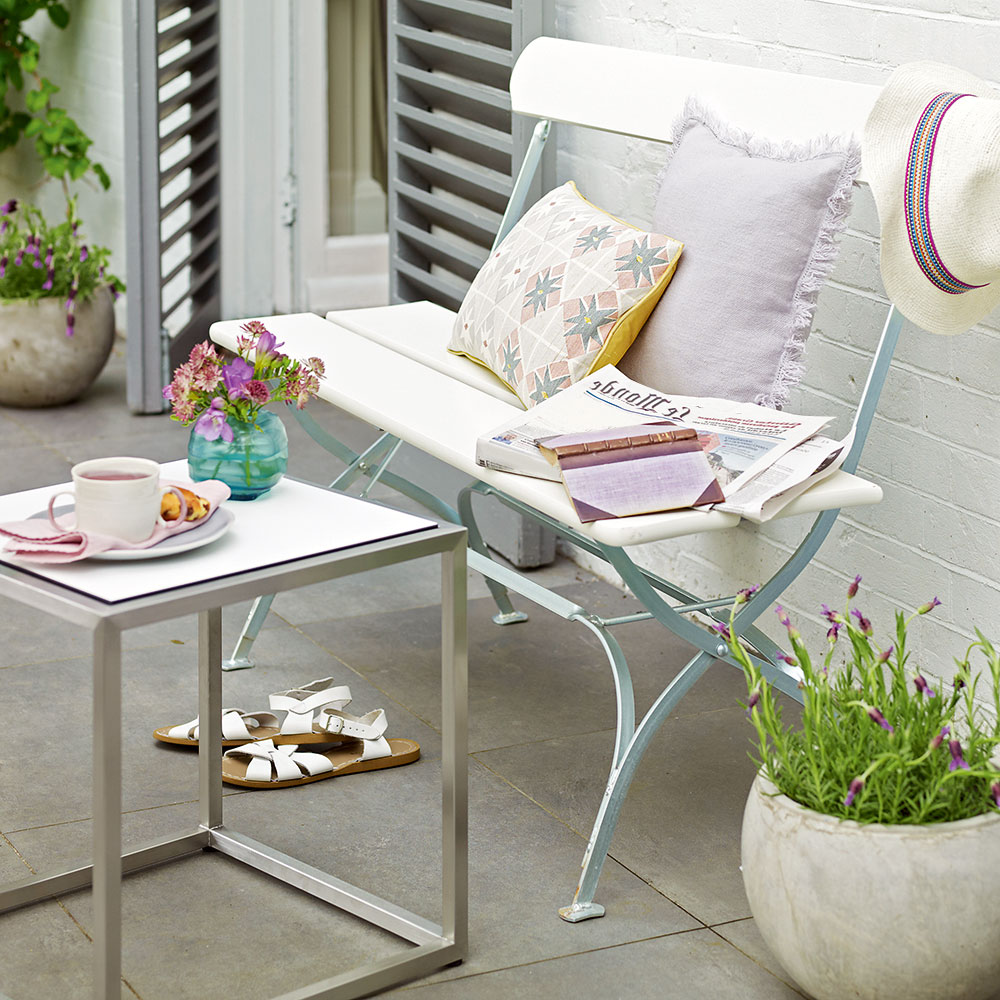
Aluminium furniture can stay outdoors, but it may oxidise over time. If you don’t have anywhere to store it inside, consider investing in outdoor furniture covers or a small storage shed. Many outdoor garden furniture retailers sell a wide range of PVC-backed polyester covers – which will keep your furniture protected from the elements, and even have UV-filters built in to prevent sun bleaching.
Remove scuff marks with a non-abrasive cleaner, wash with soapy water, and rinse off with a hose. Protect the surface with a little clear car wax.
How to clean outdoor fabric seats, cushions and parasols
Outdoor furniture now often comes with water-repellent upholstery and fillings, which will dry quickly. However with heavy rain, the inner cushions can still become wet, so any excess water needs to be removed and the cushions dried to keep them as clean as possible.
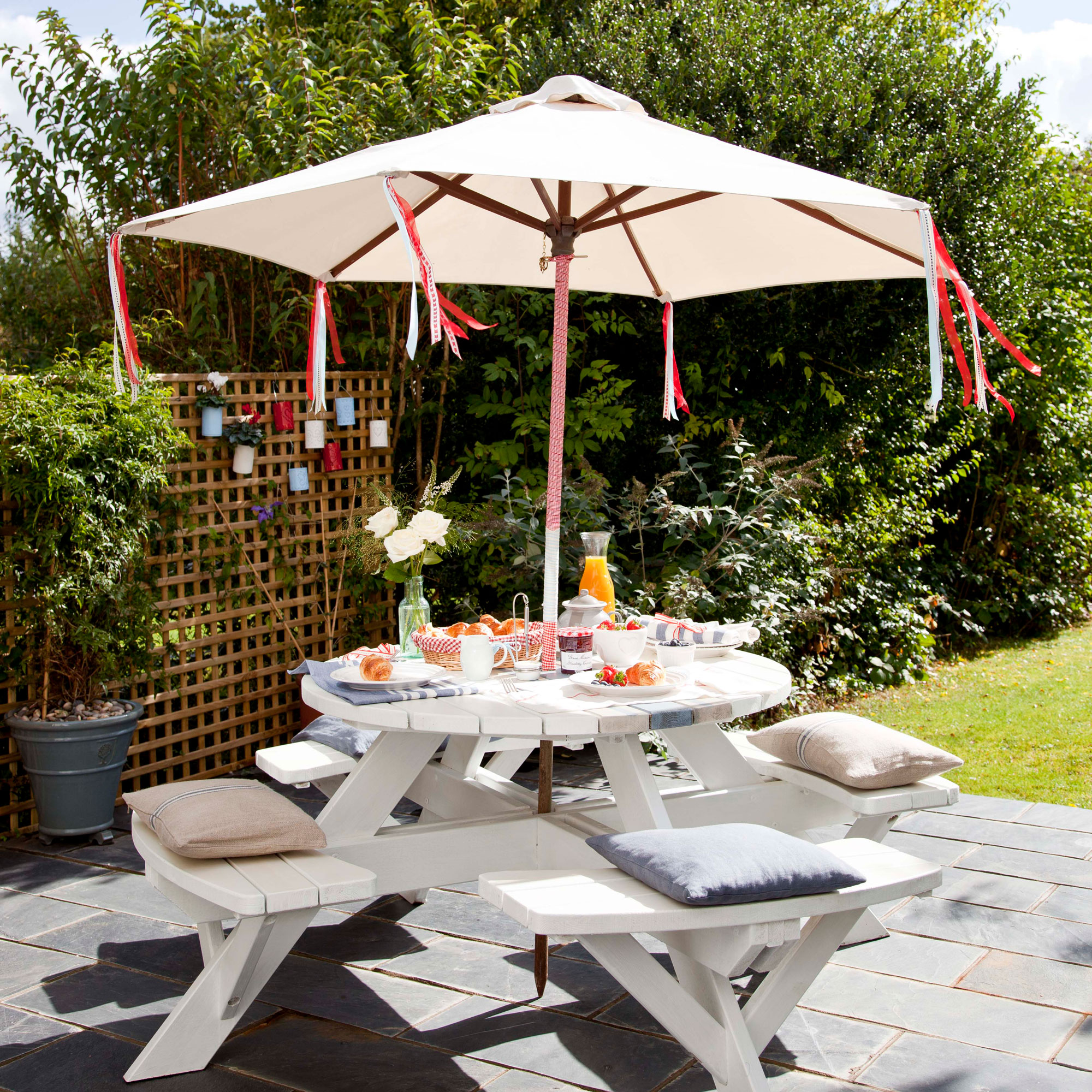
‘When it comes to washing your cushions, be sure to read the care and washing instructions on the upholstery and always use the right cleaning and care products. The Suns Lifestyle Textile Protector, £30, Suns Lifestyle, is an effective and durable impregnating agent that has been specifically developed for protecting water-repellent outdoor cushions, parasols, rugs and textiles,’ says Reilly Gray, co-founder, Suns Lifestyle.

You can also keep your outdoor fabrics looking their best by cleaning them with specialist upholstery shampoo, such as Vanish Carpet Cleaner + Upholstery, Power Liquid Shampoo, £5.32, Amazon.
Choose a sunny day, so they have a chance to dry out properly and won't develop mildew. If the fabric is just dusty or you’re short of time, use a vacuum to spruce it up in an instant. Better still if the covers are removable pop them on a gentle cycle every so often to keep them fresh.
For a more natural cleaning hack Ryan Schwarze from Luxury Rattan advises, 'When it comes to keeping cushions clean, use warm water with a mild detergent of choice to spot clean non-removable cushion covers. A soft scrubber is preferred to work the stain away before cleaning with a damp cloth. Excess moisture can be absorbed with towels to ensure that as much moisture is absorbed before leaving to dry.'
FAQs
How do you remove green algae from garden furniture?
When furniture is plagued with algae it can quickly spread and take over the furniture. When algae is left to grow on wooden garden furniture it can lead to decay and on wrought iron furniture it causes rust and weakens the structure.
The cheapest and easiest way to remove algae is to use a few drops of liquid detergent in a bucket of water and use a brush to scrub any algae-covered areas away. Make sure to rinse thoroughly, remove any excess water with a dry cloth and then leave to dry in the sun.
Another method to remove algae and its stains is to use a mixture of baking soda, water and vinegar. Add two parts white vinegar to one part water and three heaped spoons of baking soda. Place a scrubbing brush into the mixture and apply it to the algae stains on your furniture, then leave it for ten minutes. Gently scrub away the algae and the stains and rinse the mixture away with water, before leaving it to dry in the sun.
What is the best thing to clean garden furniture?
Sometimes the most simple thing is the best thing when it comes to how to clean garden furniture.
Rian Habergham from Leisure Bench says, 'The best thing to clean garden furniture is warm soapy water! If you follow this method regularly, you should be able to keep your garden furniture looking pristine throughout the year. You can buy specific garden furniture cleaners in various DIY shops, but you must make sure that this is suitable for your furnishings and won't damage them.'

Amy Cutmore is an experienced interiors editor and writer, who has worked on titles including Ideal Home, Homes & Gardens, LivingEtc, Real Homes, GardeningEtc, Top Ten Reviews and Country Life. And she's a winner of the PPA's Digital Content Leader of the Year. A homes journalist for two decades, she has a strong background in technology and appliances, and has a small portfolio of rental properties, so can offer advice to renters and rentees, alike.
- Imani CottrellContent Editor